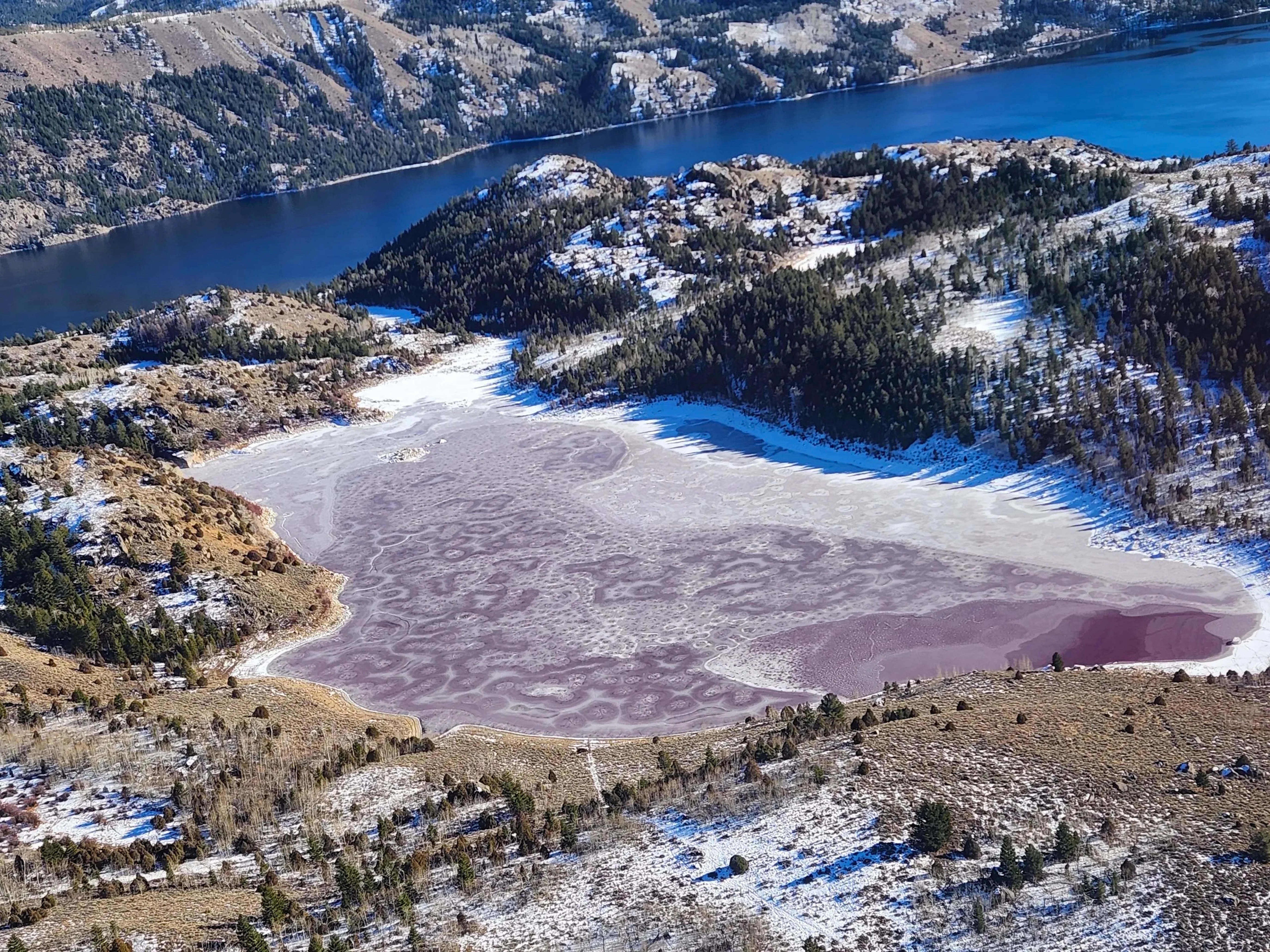Post-thaw, Pinedale’s red lake quickly tagged as Wyoming’s first ‘harmful’ cyanobacteria bloom of 2025

FROM WYOFILE:
Although mysterious water color cleared up over the course of winter, Little Soda Lake is already dealing with water quality issues.
A once-prized trout fishery in the Pinedale area that raised concerns in late 2024 when it turned the color of a taconite tailings pond is again struggling with water quality.
The ice just came off many lakes along the Wind River Range’s western front, including Little Soda Lake, which shed its deep red color over the winter. Yet almost immediately — within just a few weeks at most — environmental regulators detected potential issues with the still-frigid water. Samples were taken by the Bridger-Teton National Forest last week, and results just came in.
“A harmful cyanobacteria bloom recreational use bloom advisory has been issued for Little Soda Lake,” Wyoming Department of Environmental Quality officials announced in a public notice Monday.
Notably, the bloom detected in the high-elevation water body, located at 7,600 feet and just a half-mile from crystal clear Fremont Lake, marks Wyoming’s first verified harmful cyanobacteria bloom of 2025, according to the state’s monitoring website.
Harmful cyanobacteria blooms are often associated with warm weather and nutrient pollution, like runoff from agricultural operations, though they can also plague the backcountry. Occurrences typically pick up pace late in the summer and early fall.
While Little Soda Lake harboring Wyoming’s first harmful cyanobacteria bloom of the year is surprising, it’s unclear if the potentially toxic water is a remnant from last year.
“It’s unknown, but a warmer-than-average winter combined with recent warm weather may be contributing to conditions that allow HCBs to appear earlier than usual,” DEQ spokeswoman Kimberly Mazza wrote in an email.
DEQ was able to acquire a cyanotoxin sample, Mazza said. Results are pending, but eventually the sample will give the state agency more insight into the toxicity of the cyanobacteria suspected to be a factor in Little Soda Lake’s crimson color.
Land managers and environmental regulators should learn a lot about what’s going on in Little Soda Lake in 2025. The water body will be sampled monthly, according to DEQ’s 2025 sampling and analysis plan.
Routine monthly monitoring is typically reserved for lakes that have “high to very high” access and recreational use and toxic bloom potential. Exceptions were made for Brooks Lake and Little Soda Lake.
“These waterbodies were classified as very high priority due to significant public interest,” DEQ’s plan says.
WyoFile is an independent nonprofit news organization focused on Wyoming people, places and policy.
This story was posted on May 13, 2025.








